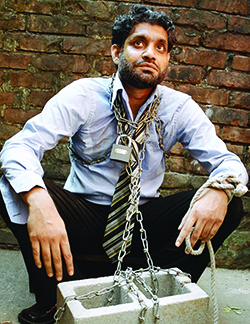Last Night in Soho (2021), Edgar Wright’s newest film captures the story of the young fashion student Eloise (Thomasin Mckenzie) as she moves into London’s Soho.
The freshman University student soon finds herself mysteriously transported back to 1960’s SoHo shadowing an aspiring singer Sandy (Anya Taylor Joy) as she grapples with the vices of being a young woman in the misogynist world of show businesses.
The psychological thriller follows Eloise’s slow descent into paranoia and hysteria as the past splinters into something horrific, something violent, something still alive.
The audience of Rotten Tomatoes states, “Last Night in Soho has visual thrills, a great soundtrack, and a plot that keeps you guessing — in other words, everything you want from an Edgar Wright movie.”
As per the critics, “Although it struggles to maintain its thrilling early momentum, Last Night in Soho shows flashes of Edgar Wright at his most stylish and ambitious.” Overall, at a 90% audience rate, Last Night in Soho is a fantastic film.
However, shockingly and despite the good reviews, Last Night in Soho did not perform up to expectations at the box office. From a 43 million dollar budget, Last Night in Soho accumulated 23 million dollars worldwide.
The performances of Thomasin Mckenzie and Anya Taylor Joy are spectacular but Mckenzie really steals the show through her ability to express so much emotion so consistently. This emotion is most vividly seen in the terror that her character experiences for so long that at times I genuinely felt pangs of pain for her.
Where the film falls a little short is in it’s story. While extremely well performed and directed, the plot to Last Night In Soho forces audiences to dismiss and assume a few too many leaps in logic by the end and leaves several questions unanswered but where the film makes up for it is its style.
Last Night in Soho can be summed up in one word: Overwhelming. And rightfully so, because the movie is categorized a horror/drama movie.
Edgar Wright’s beautiful and meticulous decision-making culminates in one of the most tense and genuinely terrifying films in the past few years by overwhelming the senses of the viewer.
The stark contrast between the bleak and barren modern-day SoHo and the neon lit brilliant 60’s SoHo creates two separate worlds that makes their eventual overlap even more disturbing. The viewer becomes disturbed as the eyes become disorientated in the blurring lights, quick takes, and constant movement of every scene.
At the same time the score and soundtrack bring about such a beautiful morbidity that never ceases to rise to a fever pitch even in the calmest scenes, making the viewer just as paranoid as our protagonist.
The most notable moment of this is in the first 20 minutes of the film where the audio of the film was kept in a diluted stereo sound in theaters. That is until the transition into 60’s SoHo where all at once it switches to a beautiful roaring surround sound to capture the complete transition of worlds and completely jar the audience’s hearing in a way that would be impossible to capture outside of the movie theater.
This is where I argue that films such as Last Night in Soho are the reason why theaters will never go out of business in a post-COVID world. The experience captured in the theater when watching Last Night in Soho can’t be recreated at home.
Theaters help facilitate the grandeur and scale of a film the way directors intended and the difference has become grossly apparent.
Movies such as Encanto are family sing-along films and as such are designed for at-home family viewings on TV but others such as Demon Slayer: Mugen Train, with its multiple wide shots, hard camera panning, and wide settings is designed for the scale of a movie screen.
Last Night in Soho greatly benefits from being played on theater; all of its grandeur and wide-panned features are enhanced on the theater screen. The soundtrack maximizes its effect of horror and suspense in a theater as well.
I missed out on watching Demon Slayer: Mugen Train in theaters and I regret it terribly, but I am glad I won’t have to regret not seeing Last Night in Soho in theaters once it reaches home viewing.



